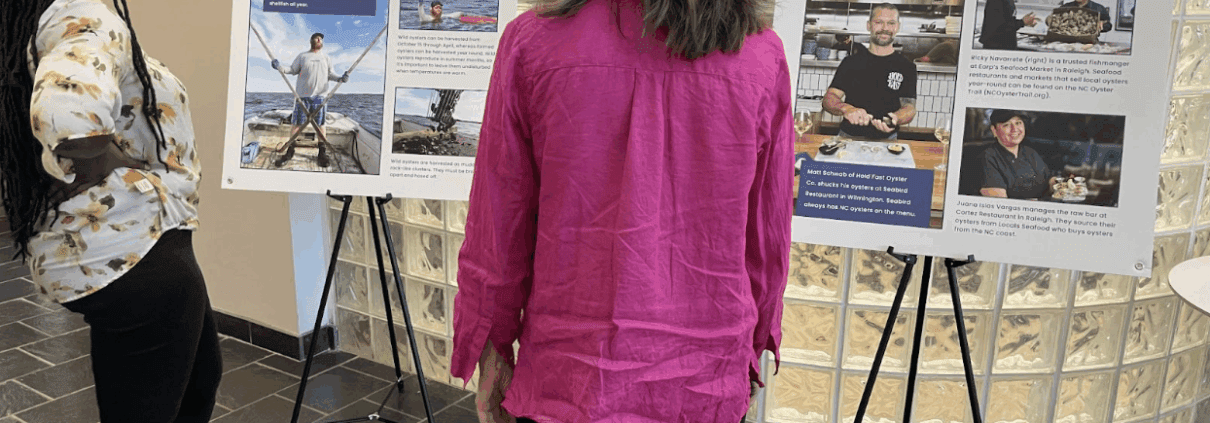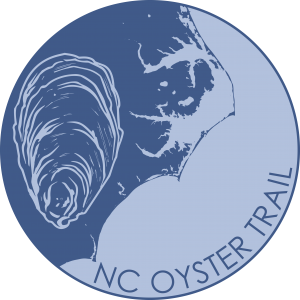Oyster Photo Exhibit Available For Your Community
By Jane Harrison on May 5, 2025 | Reprinted from North Carolina Sea Grant
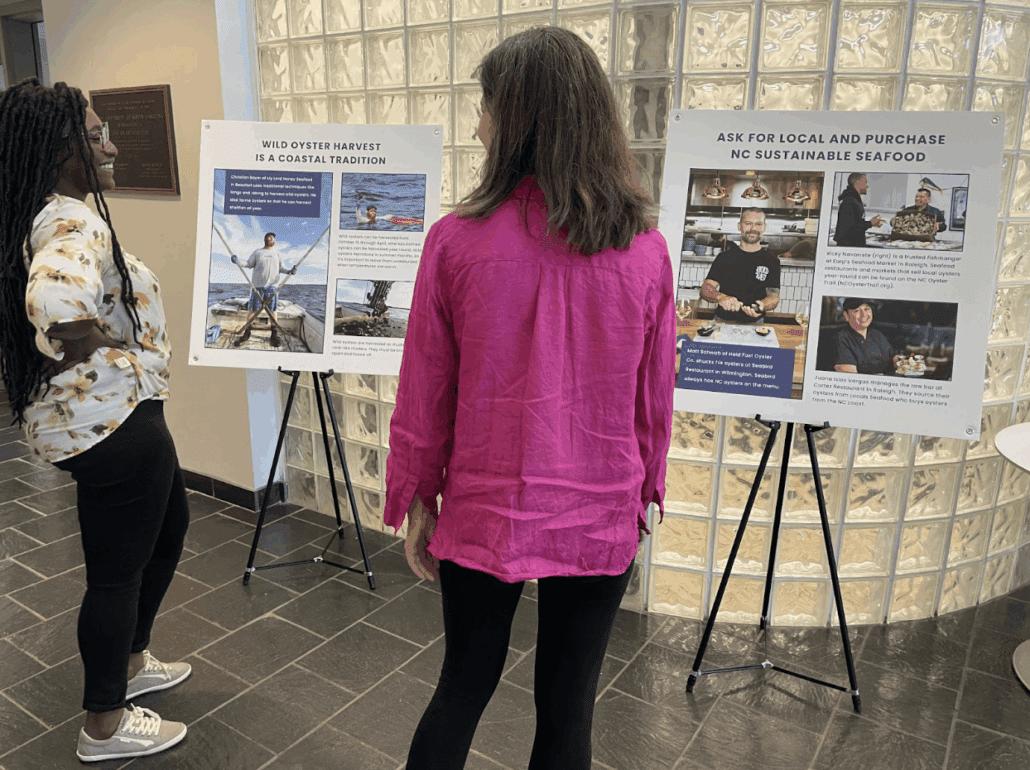
Sea Grant staff visiting the oyster photo exhibit. Credit: Jane Harrison.
North Carolina Sea Grant and the NC Oyster Trail have teamed up on an oyster photo exhibit to showcase the folks behind the shellfish grown in our state. The exhibit celebrates the ecological, cultural, and economic importance of oysters and the people who help sustain this vital coastal resource. To bring the exhibit to your community, fill out this interest form.
The Exhibit
This dynamic photo exhibit includes seven 3×3 ft displays, each highlighting a different aspect of North Carolina’s oyster story, from restoring coastal ecosystems to supporting local businesses. These beautiful and informative panels feature farmers, scientists, harvesters, and entrepreneurs who are helping oysters thrive in our state.
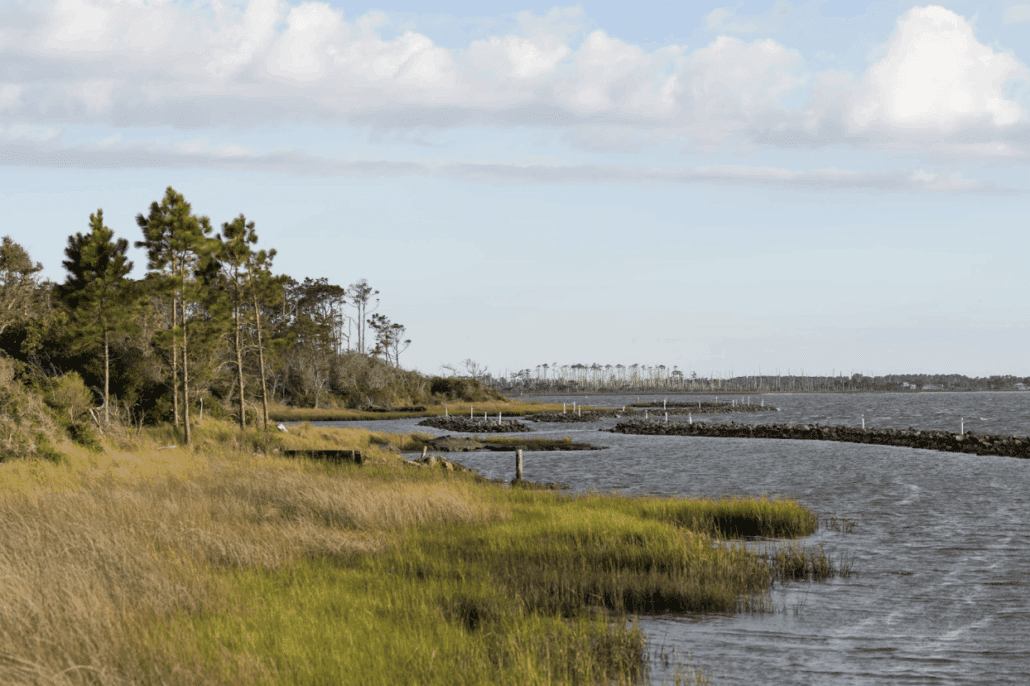
A living shoreline. Credit: Justin Kase Conder.
An example of a featured topic in the exhibit is oysters’ contribution to a healthy ecosystem. A photo of a living shoreline on Harkers Island depicts the essential ecosystem services provided by oysters. Shellfish like oysters improve water quality by filtering nutrients, provide habitat for 300+ finfish and crustaceans, and serve as a food source for marine organisms and humans.
Another key takeaway from the exhibit is that 50% of NC oyster production comes from aquaculture. North Carolina has more than 300 oyster farms. Aquaculture produces oysters without depleting wild stocks. Oyster farmers often use floating cages or bags to grow out oyster seed.
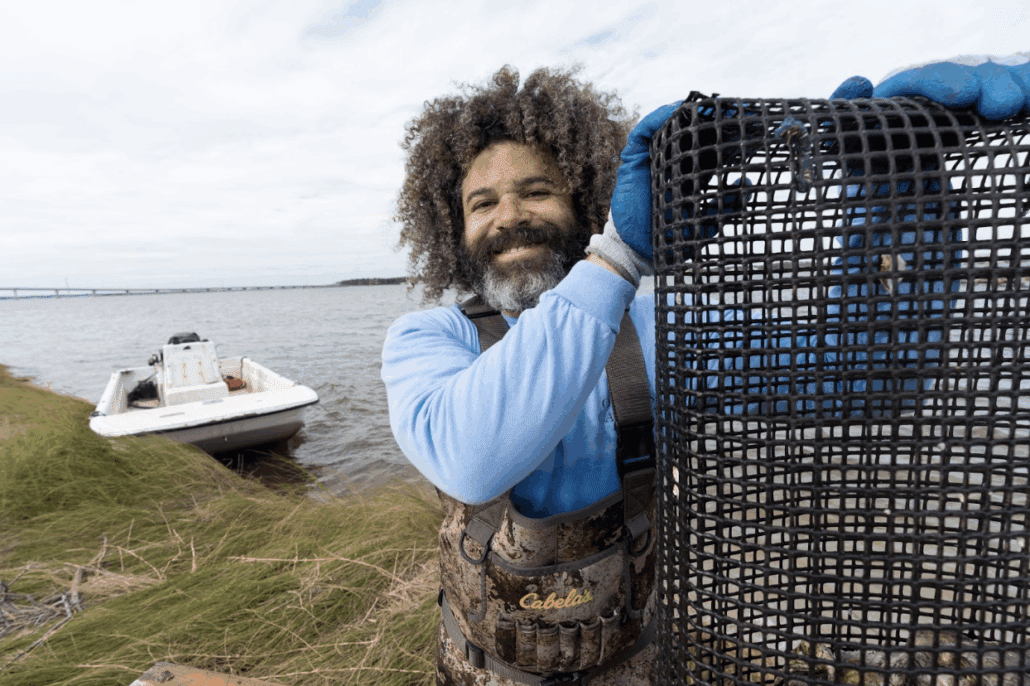
Ryan Bethea. Credit: Justin Kase Conder.
“The best part about oyster farming is being out on the water. And oysters are delicious,” says Ryan Bethea, oyster farmer and owner of Oysters Carolina.
Make sure to ask for local seafood and support North Carolina’s working waterfront communities. Restaurants and markets that sell local oysters year-round can be found on the NC Oyster Trail. And once you’re done eating oysters, recycle the shells. Juvenile oysters attach to hard surfaces like shells, fusing together to form reefs, and are available for harvest in the next generation.

Matt Schwab of Hold Fast Oyster Co. Credit: Justin Kase Conder.
Want to Host the Exhibit?
The exhibit is a great fit for museums, aquariums, libraries, classrooms, visitor centers, and more. It’s easy to install and can be set up for special events or longer stays (up to four weeks). Displays are available with metal stands or can be wall-mounted with pushpins.
To bring the exhibit to your community, fill out this interest form.
“The exhibit connects people to the coastal heritage of North Carolina while raising awareness about the role oysters play in healthy ecosystems and resilient communities,” says Jane Harrison, NC Oyster Trail coordinator and NC Sea Grant coastal economics specialist. For more info or to chat about exhibit logistics, email jane_harrison@ncsu.edu.

